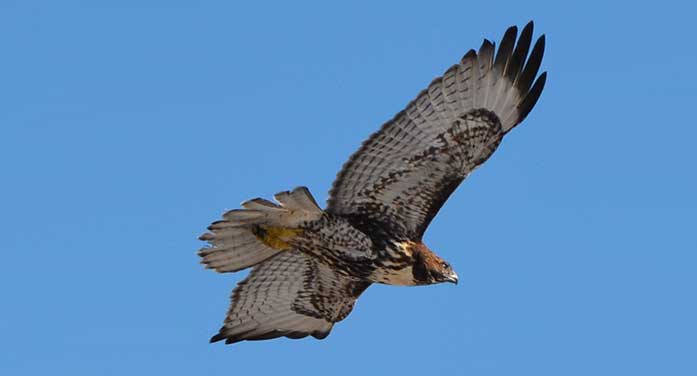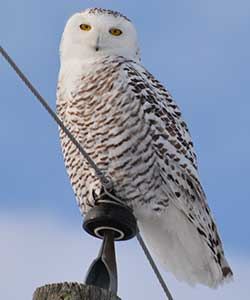 No, this article on raptors isn’t about basketball – it’s about birds.
No, this article on raptors isn’t about basketball – it’s about birds.
Raptors – including hawks, eagles, falcons, harriers, owls and vultures – undertake prolonged and extensive migrations over a protracted period.
What drives them? Where do they go?
Let’s talk about owls first.
Most owls are actually quite sedentary and only move short distances during the migration period. But some like the snowy owl undertake longer journeys – thousands of kilometers in search of food. One even made it to Hawaii recently.
It’s generally the availability of food that drives ‘northern’ owls such as the snowy and great grey southward. But if winter food is plentiful, they will stay on their northern breeding grounds all year.
Other smaller owls, such as the northern saw-whet, also migrate but follow very specific patterns, routes and timing that’s not solely linked to food availability. In fact, these small owls may be fleeing larger raptors such as great horned owls and northern goshawks that will relentlessly hunt them in winter when other food is harder to find.

In the spring, hawks migrate north starting in January and complete their migration as late as early May. Why they undertake such a prolonged migration is puzzling
In the spring, hawks migrate north starting in January and complete their migration as late as early May. Why they undertake such a prolonged migration is puzzling. Wouldn’t they want to get back earlier and claim territories and mates?
 The ones that migrate latest are the ones that won’t stop here but continue northward well beyond our borders. Some go to the edge of the boreal forest and beyond to nest. And anyone who has travelled there in late spring knows that the boreal forest can be snow covered much later than in southern Canada. Since the snow hides the prey they rely on, it makes sense to delay their arrival.
The ones that migrate latest are the ones that won’t stop here but continue northward well beyond our borders. Some go to the edge of the boreal forest and beyond to nest. And anyone who has travelled there in late spring knows that the boreal forest can be snow covered much later than in southern Canada. Since the snow hides the prey they rely on, it makes sense to delay their arrival.
The earliest migrants are local nesters. They time their arrival to the availability of food. Throughout the spring, we see the same pattern repeated – the further north they travel, the later they arrive generally.
Vultures are increasingly a fixture in Ontario. We now have two species that regularly overwinter or migrate through the province. The black vulture is a newcomer and its migrational patterns are still being established, but the turkey vulture is well known and studied. It begins its migration in late March or early April and is essentially done by the end of April. Likewise in the fall, turkey vultures start to move out in mid-September but the bulk of the birds migrate throughout October and into early November.

The snowy owl undertakes long journeys – thousands of kilometres in search of food. One even made it to Hawaii recently
October is also the time when we see the peak of golden eagle migration. This species also nests in the high Arctic and leaves those lands only when the local prey is exhausted.
Bald eagles, on the other hand, have a protracted migration cycle that can last for weeks in both the spring and fall. This may be because they nest over a much greater area and eat a wider variety of food. The golden eagle relies on carrion, hares and ptarmigans for the most part, while the bald eagle will scavenge fish or hunt ducks and mammalian prey.
Falcons move through in September and October, often following migrating dragonflies such as the green darner, which provide a mobile food source for the merlin and kestrel.
The broad-winged hawk is anomalous, for it migrates out en masse in mid-September, with most birds moving past in only a few days. Likewise in the spring, it can travel in huge flocks (greater than 50,000 birds on occasion).
Why does this bird leave so quickly and why does it never linger into winter, unlike all the other hawks?
Perhaps it has to do with its food sources. It will eat a variety of critters, but insects, reptiles, small mammals, nestling birds and amphibians make up an important part of its diet. With this restricted diet, it doesn’t make sense to stay where food will be hard to find. The tropics is a much better bet!
It appears food and weather are the driving forces in raptor migration. Often the best places to look are along major coastal areas such as the Great Lakes or along north/south rivers.
The best weather (at least in the east) is light to moderate winds from the northwest.
These great birds are on the move now, so get out and see what you can find.
Geoff Carpentier is a published author, expedition guide and environmental consultant. Visit Geoff on LinkedIn, Instagram and Facebook. For interview requests, click here.
The views, opinions and positions expressed by columnists and contributors are the authors’ alone. They do not inherently or expressly reflect the views, opinions and/or positions of our publication.
© Troy Media
Troy Media is an editorial content provider to media outlets and its own hosted community news outlets across Canada.


